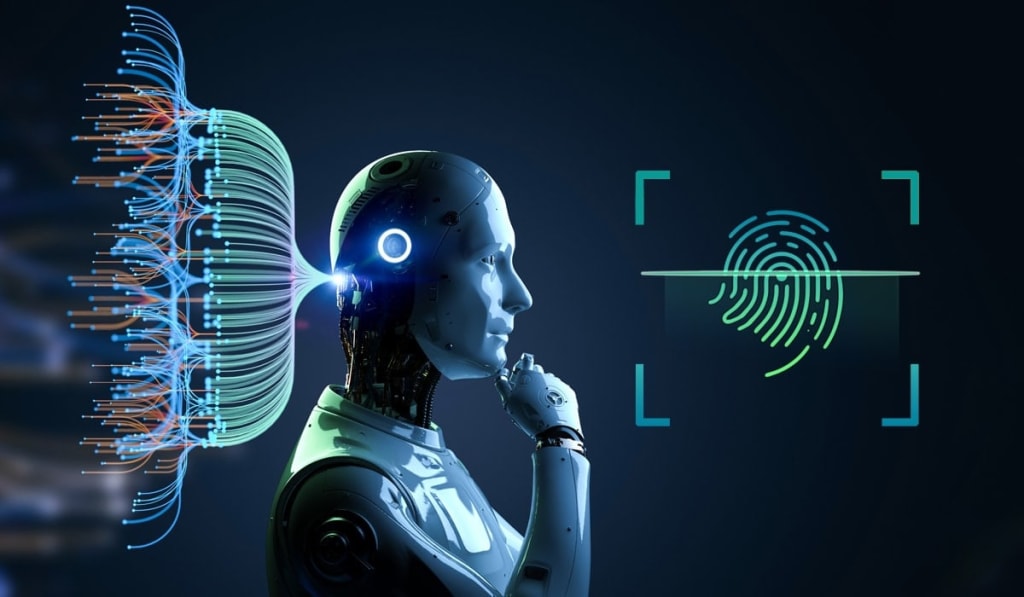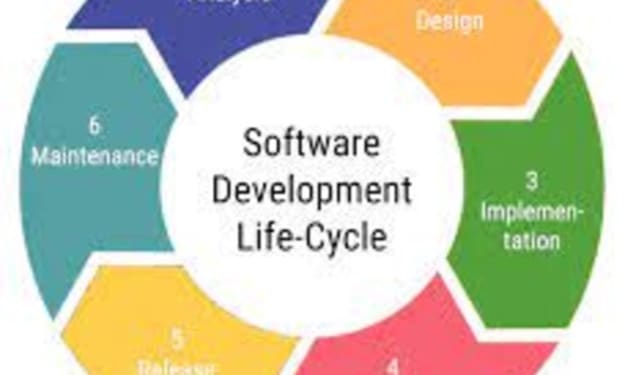The technological trends that will change 2024
software development services

This has been a year full of new innovations and interesting technological advances that have transformed and are transforming society and the world economy.
But digital evolution does not stop for a moment, so we look, once again, to the future and focus on the technologies and technological innovations that will mark 2024 .
Generative AI
It may seem obvious to start with generative artificial intelligence , but it has become, indisputably, the most influential technology of the moment.
We have only seen its first steps and 2024 will be the moment in which we will truly begin to see all the potential it has. In addition, we may see an approach aimed at democratizing knowledge and training in different business roles and functions, as well as technical ones.
- Gartner predicts that, “by 2026, more than 80% of companies will have used generative AI models and APIs and/or deployed GenAI-enabled applications in production environments , compared to less than 5% in 2023.” This is a very striking figure that will help the faster commercialization of new products, greater efficiency and business productivity, hyper-personalization and the most advanced custom software development services of the moment available to everyone.
Cybersecurity as a central pillar
IT leaders must take a pragmatic and systemic approach to continuously adjust cybersecurity optimization priorities . The best way to achieve this is through basic steps such as using encrypted services, training and raising employee awareness, performing pentesting, creating and updating protocols and software, validating compliance and governance…
And finally, adopt a Zero Trust approach , a model that assumes potential data breaches and verifies each request as if it came from an uncontrolled network. Thus, each access request is strongly authenticated, authorized within policy restrictions, and inspected for anomalies.
“Phygital” convergence and digital twins
A novel concept that refers to the space created in which the real and digital worlds converge. Closely linked to digital twins, we are witnessing a moment in which the digital is becoming more realistic and the real much more flexible and malleable. This technology allows us to process customized products in the digital world until they are perfected and get the best version of them in the real world.
It is a trend that will accelerate new digital skills in all types of jobs , as well as perfect business processes, improve efficiency and exponentially save costs.
Quantum computing
We recently shared an article with you about whether it is time to prepare for quantum computing and the conclusion was clear: a resounding yes.
It is a form of computing working with the help of quantum phenomena such as superposition and entanglement. It is a software development service that has the potential to optimize investment strategies, encryption or discover new products in time frames never seen before .
Global market revenue is expected to exceed $2.5 billion by 2029 as quantum computers are much faster than normal computers. Companies such as Microsoft, AWS or Google are putting great efforts into innovation in this field.
Green Tech
We are in a time of environmental crisis and technology is one of the keys to helping create an ecological balance and social rights.
Governments and organizations are committing to zero emissions agreements and sustainable technologies prevent, mitigate and adapt to environmental risks . In fact, they improve outcomes in terms of human rights, well-being or prosperity, as well as strengthening business conduct, developing capabilities or improving overall performance.
Thanks to new technologies such as AI, blockchain, cloud computing, extended reality or robotics, among many others, a greener and more sustainable future can be created without giving up efficiency and business growth.
The importance of data
Data is key to making more effective business decisions and creating a great impact on a company's success so data is considered an important asset for a custom software development company.
Here we find a concept like datafication, which consists of transforming everything into devices or software driven by data. What does this mean? Well, tasks are modified by data-driven technology, from smartphones or office applications, which need to be stored correctly and securely.
Advantages of Data Driven Strategy :
Create new customer experiences
Accelerate operations
Capitalize on new market
Platform Engineering
It helps in creating and managing internal self-service platforms. That is, each platform is a layer, created and maintained by a specialized product team, designed to meet the needs of users by interconnecting with tools and processes.
It optimizes developer experience and accelerates the delivery of business value . Additionally, it reduces cognitive load by improving developer experience and productivity, improves your ability to run, manage and develop your applications, improves talent retention, and ensures reliability and security.
Smarter apps
Last year we talked to you about superapps, a combination of an application, a platform and a digital ecosystem, all within the same application, which created personalized, attractive and broader-reaching user experiences.
With the arrival of generative AI, business applications take a step further, as they will now be much smarter, transforming the experience of customers, users, product owners and developers.
Coupled with data from industry and external sources, intelligent applications provide information in applications that employees already use ; And thanks to AI, predictions or recommendations are included, making applications more relevant to the user, leading to better results and data-driven decisions
Robotic Process Automation (RPA)
RPA automates business processes such as defining applications, executing tasks, managing data or even responding to emails and it is closely related to artificial intelligence and machine learning,
Its main advantage is that it automates repetitive tasks that employees used to do, allowing them to focus on more creative and productive tasks. In addition, it saves costs, increases profitability and reduces the time to complete long tasks, and has a lower probability of error .
Therefore, it helps to take advantage of the human talent of companies and is very useful in the collection and storage of various data and in sectors such as finance, customer service or human resources.
IoT and hyperconnection
We are witnessing a time in which sensors and networks of connected IoT devices have become a fundamental point for creating digital twins, building the metaverse, improving the functioning of intelligent machines or designing the cities of the future.
IoT technology collects and interprets the data collected by industrial machines to subsequently offer information about the process, in order to improve efficiency, save production costs, detect new business opportunities and consumer trends or promote innovation. of the products.
And we are only in the beginning stages of everything that can be achieved, as forecasts suggest that around 50 million IoT devices will be in use by 2030. Thus, a massive network of interconnected devices can be created that provide greater security, efficiency and decision making for companies, as more data is collected and analyzed.
This has been a year full of new innovations and interesting technological advances that have transformed and are transforming society and the world economy.
But digital evolution does not stop for a moment, so we look, once again, to the future and focus on the technologies and technological innovations that will mark 2024 .
Generative AI
It may seem obvious to start with generative artificial intelligence , but it has become, indisputably, the most influential technology of the moment.
We have only seen its first steps and 2024 will be the moment in which we will truly begin to see all the potential it has. In addition, we may see an approach aimed at democratizing knowledge and training in different business roles and functions, as well as technical ones.
Gartner predicts that, “by 2026, more than 80% of companies will have used generative AI models and APIs and/or deployed GenAI-enabled applications in production environments , compared to less than 5% in 2023.” This is a very striking figure that will help the faster commercialization of new products, greater efficiency and business productivity, hyper-personalization and the most advanced custom software development services of the moment available to everyone.
Cybersecurity as a central pillar
IT leaders must take a pragmatic and systemic approach to continuously adjust cybersecurity optimization priorities . The best way to achieve this is through basic steps such as using encrypted services, training and raising employee awareness, performing pentesting, creating and updating protocols and software, validating compliance and governance…
And finally, adopt a Zero Trust approach , a model that assumes potential data breaches and verifies each request as if it came from an uncontrolled network. Thus, each access request is strongly authenticated, authorized within policy restrictions, and inspected for anomalies.
“Phygital” convergence and digital twins
A novel concept that refers to the space created in which the real and digital worlds converge. Closely linked to digital twins, we are witnessing a moment in which the digital is becoming more realistic and the real much more flexible and malleable. This technology allows us to process customized products in the digital world until they are perfected and get the best version of them in the real world.
It is a trend that will accelerate new digital skills in all types of jobs , as well as perfect business processes, improve efficiency and exponentially save costs.
Quantum computing
We recently shared an article with you about whether it is time to prepare for quantum computing and the conclusion was clear: a resounding yes.
It is a form of computing working with the help of quantum phenomena such as superposition and entanglement. It is a software development service that has the potential to optimize investment strategies, encryption or discover new products in time frames never seen before .
Global market revenue is expected to exceed $2.5 billion by 2029 as quantum computers are much faster than normal computers. Companies such as Microsoft, AWS or Google are putting great efforts into innovation in this field.
Green Tech
We are in a time of environmental crisis and technology is one of the keys to helping create an ecological balance and social rights.
Governments and organizations are committing to zero emissions agreements and sustainable technologies prevent, mitigate and adapt to environmental risks . In fact, they improve outcomes in terms of human rights, well-being or prosperity, as well as strengthening business conduct, developing capabilities or improving overall performance.
Thanks to new technologies such as AI, blockchain, cloud computing, extended reality or robotics, among many others, a greener and more sustainable future can be created without giving up efficiency and business growth.
The importance of data
Data is key to making more effective business decisions and creating a great impact on a company's success so data is considered an important asset for a custom software development company.
Here we find a concept like datafication, which consists of transforming everything into devices or software driven by data. What does this mean? Well, tasks are modified by data-driven technology, from smartphones or office applications, which need to be stored correctly and securely.
Advantages of Data Driven Strategy :
Create new customer experiences
Accelerate operations
Capitalize on new market
Platform Engineering
It helps in creating and managing internal self-service platforms. That is, each platform is a layer, created and maintained by a specialized product team, designed to meet the needs of users by interconnecting with tools and processes.
It optimizes developer experience and accelerates the delivery of business value . Additionally, it reduces cognitive load by improving developer experience and productivity, improves your ability to run, manage and develop your applications, improves talent retention, and ensures reliability and security.
Smarter apps
Last year we talked to you about superapps, a combination of an application, a platform and a digital ecosystem, all within the same application, which created personalized, attractive and broader-reaching user experiences.
With the arrival of generative AI, business applications take a step further, as they will now be much smarter, transforming the experience of customers, users, product owners and developers.
Coupled with data from industry and external sources, intelligent applications provide information in applications that employees already use ; And thanks to AI, predictions or recommendations are included, making applications more relevant to the user, leading to better results and data-driven decisions
Robotic Process Automation (RPA)
RPA automates business processes such as defining applications, executing tasks, managing data or even responding to emails and it is closely related to artificial intelligence and machine learning,
Its main advantage is that it automates repetitive tasks that employees used to do, allowing them to focus on more creative and productive tasks. In addition, it saves costs, increases profitability and reduces the time to complete long tasks, and has a lower probability of error .
Therefore, it helps to take advantage of the human talent of companies and is very useful in the collection and storage of various data and in sectors such as finance, customer service or human resources.
IoT and hyperconnection
We are witnessing a time in which sensors and networks of connected IoT devices have become a fundamental point for creating digital twins, building the metaverse, improving the functioning of intelligent machines or designing the cities of the future.
IoT technology collects and interprets the data collected by industrial machines to subsequently offer information about the process, in order to improve efficiency, save production costs, detect new business opportunities and consumer trends or promote innovation. of the products.
And we are only in the beginning stages of everything that can be achieved, as forecasts suggest that around 50 million IoT devices will be in use by 2030. Thus, a massive network of interconnected devices can be created that provide greater security, efficiency and decision making for companies, as more data is collected and analyzed.
About the Creator
Enjoyed the story? Support the Creator.
Subscribe for free to receive all their stories in your feed. You could also pledge your support or give them a one-off tip, letting them know you appreciate their work.





Comments
There are no comments for this story
Be the first to respond and start the conversation.